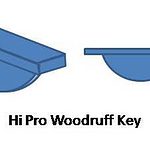Today we will discuss about what is cast iron and types of cast iron. Cast iron is ferrous carbon alloys which contain 1.7 to 4.5 percent carbon in either free or combine form. Cast iron is a brittle and less ductile material which has high compressive strength. Due to its high compressive strength it is used to make base or body of most machines. Cast iron also have low melting point which is around 1200 degree centigrade which make it suitable for casting. Due to its casting properties it is named as cast iron. It has low cost of manufacturing and has excellent machining property.
Cast iron also contain small quantity of impurities such as silicon, sulphur, manganese and phosphorus, copper, nickel, chromium, which effect its properties small or large level. The effect of these properties is as follow.
Silicon: It is present in cast iron up to 4 percent. It promotes graphite formation which make it soft and easily machinable.
Sulphur: It is present up to 0.1 present. It makes cast iron hard and brittle.
Manganese: It promote carbide formation of cast iron which make it ehite and hard. It is present up to 0.75 percent.
Chromium: It also promote carbide formation which make it hard and difficult to machine.
According to the carbon percentage, cooling condition, alloying element, heat treatment etc. cast iron may be divided into following types.
Cast Iron and its Types:
1. Gray Cast Iron:
Cast iron which contain carbon in free form, known as Gray cast iron. It is also known as commercial cast iron due to mostly used in commercial purpose. It contains 3 to 3.5 percentile carbon and rest iron. This cast iron has low tensile strength, high compressive strength and no ductility. It has excellence machining property. This metal is designate by FG followed by the digit show maximum tensile stress.
2. White Cast Iron:
Cast iron in which carbon is present in combined form or in carbide form known as white cast iron. White colour is due to carbide formation. It contain up to 2.3 percent carbon. It is hard and not suitable for machining. This iron has high tensile strength and a low compressive strength.
3. Malleable Cast Iron:
This cast iron is obtained from white cast iron by heat treatment process. It is mostly obtain by annealing of white cast iron. It has improved strength and ductility like steel but can be cast easily. It is often used for small castings requiring good tensile strength and the ability to flex without breaking (ductility). Uses include electrical fittings, hand tools, pipe fittings, washers, brackets, fence fittings etc.
4. Nodular Cast Iron:
It is also known as ductile or high strength cast iron. It has high strength. It is obtained from Gray cast iron by adding small amount of magnesium to the molten stage. It is designate by SG followed by the numbers which indicate tensile strength and percentage elongation.
5. Mottled Cast Iron:
Cast iron which have equal amount of free carbon and carbide known as mottled cast iron. It has intermediate property and colour of Gray cast iron and white cast iron.
6. Chilled Cast Iron:
If the white cast iron quick cooled from molten stage, the iron produced is known as chilled cast iron.
7. Alloy Cast Iron:
Alloy cast iron produced by adding some alloying element in cast iron like nickel, chromium, copper etc. It has increase properties according to the alloying element. This cast iron is produce to get desire properties of cast iron.
This is all about what is cast iron and types of cast iron. If you have any query regarding this article ask by commenting. If you like this article, don’t forget to share it on social networks. Thanks for reading it.








Very good basic information
THANKS